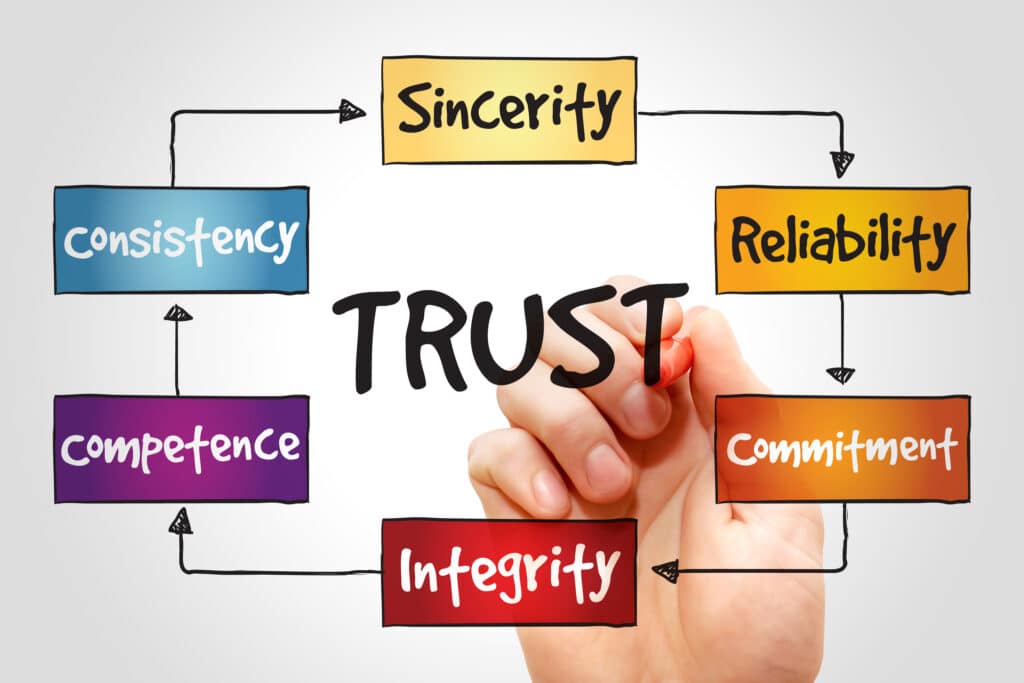Trust-based philanthropy has been gaining ground in the 2020s, providing a way to reframe the relationship between donors and nonprofits in a more productive, equitable way.
In traditional philanthropy, the donors set the terms and the nonprofits must then meet all their requirements for initial and ongoing funding. Trust-based philanthropy flips that script. The focus is on empowering nonprofit organizations by trusting their expertise and giving them the freedom to use the funds in the most effective way they see fit. It’s like saying, “We believe in you—now go do what you do best.”
The Past Four Years
The tide toward trust-based philanthropy started to turn in 2020 in response to the COVID-19 pandemic. Because of the need to respond quickly to health and social needs, more funders dropped onerous reporting requirements to be able to move quickly with fewer strings attached. They converted restricted grants to general operating support so profits could pivot to meet unforeseen needs. This was also a time that funders started to examine their donations in the context of social justice and power dynamics.
Organizations like the Trust-Based Philanthropy Project (TBPP), launched in 2020, began advocating for a relationship-focused approach between foundations and nonprofits, emphasizing long-term support and reducing the administrative burden on nonprofits.
According to the TBPP website: “We envision a world where relationships are built on vulnerability, transparency and humility; where community and nonprofit leaders are valued, supported, and trusted; and where funders bring an awareness of power and equity to their grantmaking.”
In the past four years, MacKenzie Scott, the ex-wife of Amazon founder Jeff Bezos, has been a pioneer in trust-based philanthropy with big, unrestricted donations to a wide range of nonprofits. Scott’s method of giving with minimal strings attached has been hailed as a game-changer, helping to set a new standard for philanthropic practice.
But trust-based philanthropy is not for everyone. The Gates Foundation, for example, has said that trust-based philanthropy does not fit the foundation’s outcome-driven work in health and other areas where their approach seeks pre-defined and measurable goals.
Addressing the Challenges
As we advise clients, charitable giving does not have to use just one approach and it’s often best that it does not. A variety of giving vehicles and strategies can be used in tandem to get better outcomes. Trust-based philanthropy has drawbacks that many funders are wary of, including:
Less Control: Funders may feel less control over how their money is spent, which can be a tough pill to swallow for those used to dictating terms.
Risk of Mismanagement: There’s always a risk that funds might not be used as effectively as intended, though this is mitigated by the careful selection of grantee partners.
Scaling Issues: While effective on a smaller scale, trust-based philanthropy can be challenging to implement consistently across larger, more complex funding ecosystems.
Relationships, not Transactions
To counter the challenges of trust-based philanthropy, a strong relationship needs to be in place between the funder and the nonprofit. Knowing how the nonprofit is structured and operates is key, as well as its needs, challenges, and aspirations. On the flip side, you as the funder must be clear about your own goals, expectations and limitations. It’s a two-way street:
- Funders should approach their relationships with nonprofits as partnerships rather than transactions. This involves recognizing and valuing the expertise of nonprofit leaders and working collaboratively towards shared goals.
- Nonprofits should solicit and act on feedback from funders. Incorporating feedback from donors and the communities they serve helps ensure that funding strategies are aligned with actual needs. Nonprofits need to have mechanisms for receiving regular feedback and demonstrate a willingness to adapt based on what they learn.
Given a strong, back-and-forth relationship between donor and nonprofit, the donor can then start practicing the key aspects of trust-based philanthropy from a solid foundation:
Offering at Least Some Unrestricted Funds: This allows nonprofits the flexibility to allocate resources where they are most needed.
Reducing Administrative Burdens: Simplify reporting requirements and streamline grant processes. The goal is to make it easier for nonprofits to focus on their mission rather than paperwork.
Supporting Organizational Capacity: Investing in the operations of nonprofits, including their infrastructure (computers, communications, etc.) strengthens their capabilities and longevity. This includes funding for leadership development, technology, strategic planning and other critical operational needs as they arise.
Committing to Long-Term Support: Ideally, donors should try and think beyond one-off grants. Investing in long-term partnerships allows organizations to plan and execute their strategies more effectively
The Way Forward
Trust-based philanthropy is starting to re-shape how many funders/donors think about giving and supporting nonprofit work. By focusing on relationships, flexibility and empowerment, it promises a more equitable and effective approach to philanthropy. Whether you’re a seasoned donor or new to philanthropic giving, it’s good to explore trust-based principles because applying them in context of your goals and those of the nonprofits you want to support can lead to transformative outcomes for both you and the nonprofits.



